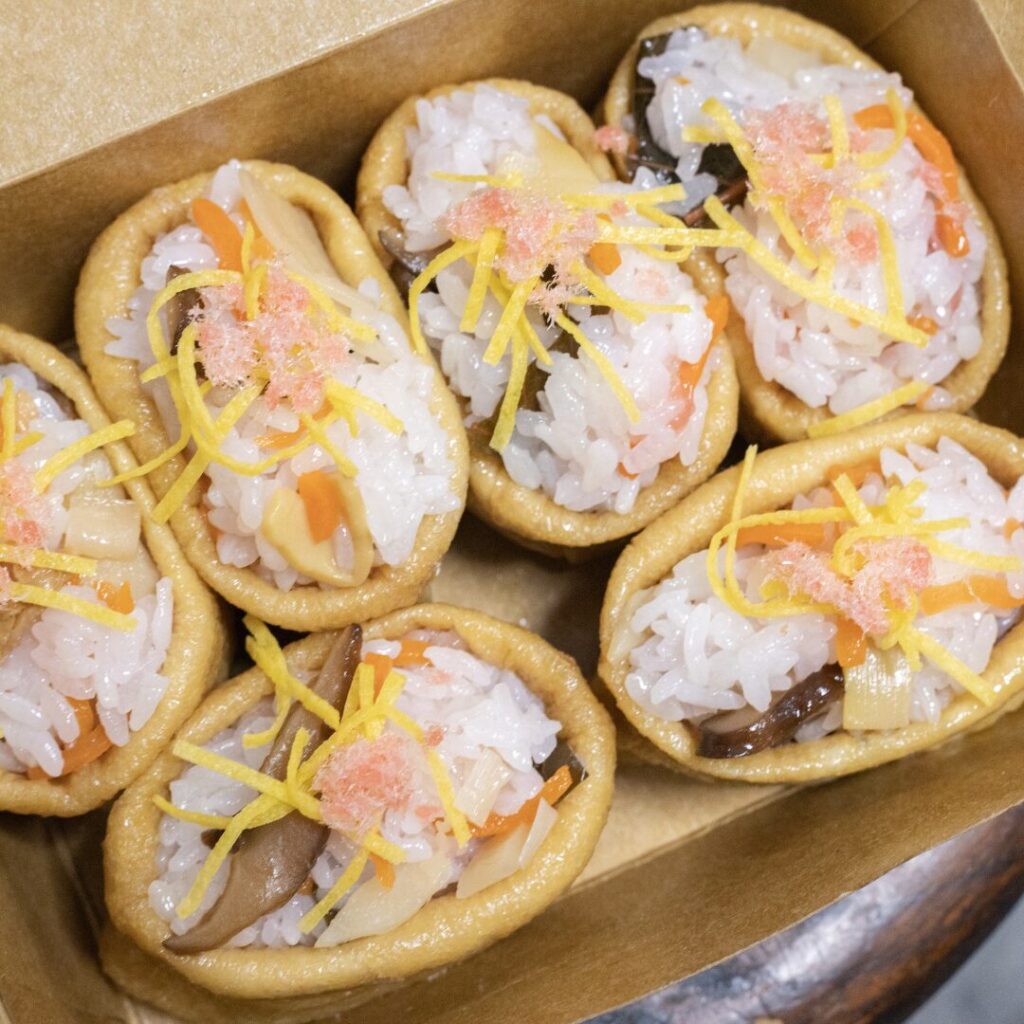Sushi rice is a staple ingredient in Japanese cuisine, and it is the foundation for making sushi rolls, nigiri, and other sushi dishes.
If you are wondering how to cook sushi rice on stove, we’ve got you covered. Cooking sushi rice on the stove can be a daunting task for beginners, but with the right equipment and technique, it is easy to make perfect sushi rice every time.
In this article, we will guide you through the process of cooking sushi rice on the stove, from understanding the rice to serving and storing it.
To make great sushi rice, it is important to understand the characteristics of the rice itself.
Sushi rice is short-grain rice that is sticky and slightly sweet, which gives it the perfect texture for sushi dishes.
Choosing the right equipment and following the preparation process is also crucial to achieving the perfect sushi rice.
We will cover everything you need to know to cook sushi rice on the stove, including tips for avoiding common mistakes and solutions for fixing them.
Key Takeaways
- Understanding the characteristics of sushi rice is important for cooking it on the stove.
- Choosing the right equipment and following the preparation process is crucial to achieving perfect sushi rice.
- Avoiding common mistakes and knowing how to fix them will help you make great sushi rice every time.
Understanding Sushi Rice
Sushi rice is a staple ingredient in Japanese cuisine, and it is the foundation of all sushi dishes. Sushi rice is a short-grain rice that is commonly used in Japanese cuisine.
Short-grain rice is a type of rice that has a short, plump, and almost round grain. It is also known as Japanese rice or Japonica rice.
The most popular variety of short-grain rice used for sushi is Koshihikari. This type of rice is known for its soft, sticky texture, and sweet flavor.
Koshihikari rice is grown in Japan and is considered a premium rice variety.
Other popular varieties of Japanese short-grain rice include Hitomebore and Akitakomachi.
Sushi rice is different from other types of rice because it is seasoned with a mixture of rice vinegar, sugar, and salt.
This seasoning gives the rice its characteristic sweet and sour flavor and helps to preserve the rice. The vinegar also helps to break down the starch in the rice, making it easier to digest.
When cooking sushi rice, it is important to use short-grain white rice. This type of rice is stickier than other types of rice, which makes it easier to form into sushi rolls.
Tamanishiki Super Premium Short Grain Rice is a popular brand of short-grain white rice that is often used for making sushi.
In addition to sushi, short-grain rice is also commonly used in other Japanese dishes such as rice bowls, donburi, and rice balls. Mochigome is a type of short-grain rice that is often used to make mochi, a traditional Japanese sweet.
How to Cook Sushi Rice on Stove: Choosing the Right Equipment

Cooking sushi rice on the stove requires a few essential pieces of equipment. While a rice cooker is a popular choice, a pot or saucepan on the stove can be just as effective.
Here’s what you’ll need:
Pot or Saucepan
Choose a pot or saucepan with a tight-fitting lid that can hold at least twice the volume of rice you plan to cook. A non-stick coating can help prevent the rice from sticking to the bottom of the pot.
Stovetop
A gas or electric stove will work for cooking sushi rice on the stove. Make sure the size of the pot or saucepan you choose fits the size of your stove’s burner.
Rice Paddle
A rice paddle or wooden spoon is essential for mixing the rice and vinegar. Avoid using metal utensils as they can damage the rice and leave a metallic taste.
Mesh Strainer
Before cooking the rice, rinse it thoroughly with cold water to remove excess starch. A mesh strainer can help with this process.
Large Bowl
After cooking the rice, transfer it to a large bowl to cool. A wooden bowl, known as a hangiri, is traditionally used for this purpose, but any large non-reactive bowl will do.
Wooden Spoon
Use a wooden spoon to mix the vinegar into the cooked rice. Avoid using metal utensils as they can damage the rice and leave a metallic taste.
Cooking Sushi Rice on Stove
Learn how to cook sushi rice on stove by following these simple steps:
Ingredients
To cook sushi rice on the stove, you will need:
- Short-grain rice
- Water
- Rice vinegar
- Sugar
- Salt
Steps
- Rinse the rice: Rinse the rice in a fine mesh strainer or a bowl until the water runs clear. This removes excess starch and dirt from the rice.
- Soak the rice: Soak the rice in water for 30 minutes before cooking. This helps to soften the rice and make it cook evenly.
- Measure the water: Measure the water for cooking the rice. The rice-to-water ratio for sushi rice is usually 1:1.1. For example, if you are cooking one cup of rice, you will need 1.1 cups of water.
- Cook the rice: Put the rice and water in a pot and bring to a boil. Reduce the heat to low and simmer for 15-20 minutes, or until the water is absorbed and the rice is tender.
- Make the vinegar mixture: In a small saucepan, mix the rice vinegar, sugar, and salt. Heat the mixture until the sugar dissolves.
- Mix the vinegar mixture with the rice: Once the rice is cooked, transfer it to a large bowl. Pour the vinegar mixture over the rice and mix well. Use a slicing motion to fold the vinegar mixture into the rice. This gives the rice a sticky texture and helps it hold together when making sushi rolls.
Tips
- Use short-grain rice: Short-grain rice is the best type of rice for making sushi. It has a sticky texture that holds together well.
- Use the right water ratio: The rice-to-water ratio is important for cooking perfect sushi rice. Use 1:1.1 ratio of rice to water.
- Simmer the rice: Simmer the rice on low heat to ensure that it cooks evenly and doesn’t burn.
- Use a vinegar mixture: The vinegar mixture gives the rice a tangy flavor and helps it stick together when making sushi rolls.
- Let the rice cool: Let the rice cool to room temperature before using it to make sushi rolls. This helps to prevent the rice from becoming too sticky.
Finishing the Sushi Rice
After the rice has finished cooking, it’s time to add the seasoning to create the perfect sushi rice. The seasoning is typically a vinegar mixture that gives the rice its signature tangy flavor.
One common recipe for sushi vinegar is to mix rice vinegar, sugar, and salt in a 5:2:1 ratio. However, you can adjust the ratio to your taste preference.
To add the seasoning, transfer the cooked rice into a large bowl, preferably a wooden bowl called a hangiri. If you don’t have a hangiri, a non-reactive glass or ceramic bowl will work just fine.
Pour the seasoning over the rice and use a rice paddle or a flat wooden spatula to mix the vinegar mixture into the rice. Be sure to use a slicing motion to avoid breaking the grains and creating mushy rice.
Once the seasoning is evenly distributed, cover the bowl with a damp cloth and let it sit for about 10-15 minutes. This will allow the rice to absorb the vinegar mixture and develop its characteristic flavor.
Keep in mind that the quality of the sushi rice is just as important as the quality of the fish or other ingredients used in the sushi. So, take your time and make sure to follow the steps carefully for the perfect sushi rice every time.
Serving and Storing Sushi Rice
Now that you know how to cook sushi rice on stove, lets discuss serving and storing them.
It is important to serve it properly and store any leftovers correctly to ensure it stays fresh and safe to eat.
Here are some tips on serving and storing sushi rice:
Serving Sushi Rice

Sushi rice is an essential ingredient in many Japanese dishes, including sushi rolls and poke bowls. When serving sushi rice, it is important to ensure that it is at the right temperature and consistency. Here are some tips:
- Sushi rice should be served at room temperature or slightly warm. If it is too hot or cold, it can affect the flavor and texture of the dish.
- Sushi rice should be moist and sticky, but not too wet or dry. If it is too wet, it can make the dish soggy, and if it is too dry, it can make the dish hard to eat.
- To serve sushi rice, use a wooden spoon or paddle to gently fluff the rice and separate any clumps.
Storing Sushi Rice
If you have leftover sushi rice, it is important to store it properly to ensure it stays fresh and safe to eat. Here are some tips:
- Let the sushi rice cool down to room temperature before storing it. This prevents the growth of harmful bacteria and keeps your rice safe to eat.
- Store sushi rice in an airtight container in the refrigerator. Sushi rice can be stored for up to a week if you don’t want it to start going bad.
- If you want to freeze sushi rice, make sure it is completely cooled down before placing it in the freezer. Sushi rice can be frozen for up to 2 months.
- When reheating sushi rice, add a little bit of water to the rice to help it steam and regain its moisture. You can also add a little bit of vinegar or sake to enhance the umami flavor.
Whether you are making homemade sushi or ordering it from a restaurant, serving and storing sushi rice properly is essential for a delicious and safe meal.
Alternative Methods
While cooking sushi rice on the stove is a traditional method, there are alternative methods that may be more convenient or efficient for some home cooks. Here are a few alternative methods to consider:
Instant Pot Sushi Rice

If you have an Instant Pot, you can use it to cook sushi rice quickly and easily.
Simply rinse the rice and add it to the Instant Pot with water in a 1:1 ratio. Close the lid and set the Instant Pot to manual high pressure for 3 minutes.
Allow the pressure to release naturally for 10 minutes before opening the lid and fluffing the rice with a fork.
Add sushi vinegar and mix well.
Rice Cooker Sushi Rice
A rice cooker is another convenient option for cooking sushi rice.
Rinse the rice and add it to the rice cooker with water in a 1:1 ratio.
Close the lid and turn on the rice cooker.
Once the rice is cooked, add sushi vinegar and mix well.
Other Methods
There are other methods for cooking sushi rice, such as using a microwave or a pressure cooker. However, the stove, Instant Pot, and rice cooker are the most common and convenient methods for home cooks.
It’s important to note that while alternative methods may be more convenient, they may not always produce the same results as traditional stove-top cooking.
Common Mistakes and Solutions
Cooking sushi rice on the stove can be tricky, and there are some common mistakes that can ruin the texture and flavor of your rice.
Here are some tips to help you avoid these mistakes and cook perfect sushi rice every time.
Mushy Rice
One of the most common mistakes when cooking sushi rice on the stove is ending up with mushy rice. This can happen if you use too much water or if you don’t let the rice rest after cooking.
To avoid mushy rice, use the correct rice-to-water ratio and let the rice rest for at least 10 minutes after cooking.
Rice-to-Water Ratio
The rice-to-water ratio is crucial when cooking sushi rice on the stove. Using too much water can result in mushy rice, while using too little water can result in undercooked rice.
The ideal ratio for sushi rice is 1:1, which means one cup of rice to one cup of water.
However, some types of rice may require slightly more or less water. Check the package instructions or do a quick search online to find the correct ratio for your rice.
Excess Starch
Excess starch can make your sushi rice sticky and clumpy.
To avoid excess starch, rinse the rice thoroughly before cooking. Place the rice in a large bowl and cover it with water.
Use your hands to gently rub the rice together to remove any excess starch.
Drain the water and repeat the process until the water runs clear.



Konnichiwa! (Hello!) I'm Pat Tokuyama, a Japanese tofu cookbook author, who travels for music, food, and adventure. If you like Japanese tea, checkout some of the newestorganic japanese tea, matcha bowls and noren and more!
** Curious about the Plant Based Japanese Cooking Club? ** Learn more here!
Other Tips
Here are some additional tips to help you cook perfect sushi rice on the stove:
- Use a heavy-bottomed pot to prevent the rice from burning.
- Bring the water to a boil before adding the rice.
- Use a tight-fitting lid to prevent steam from escaping.
- Let the rice rest for at least 10 minutes after cooking to allow the moisture to distribute evenly.
- Use a wooden spoon or paddle to stir the rice, as metal utensils can damage the grains.
- Add a little vinegar and sugar to the rice after cooking to give it the traditional sushi flavor.
By following these tips and avoiding these common mistakes, you can cook perfect sushi rice on the stove every time.
Exploring Sushi Rice Recipes
Sushi rice is a staple in Japanese cuisine, and making it on the stove is an easy and accessible way to enjoy this delicious dish at home.
With just a few simple ingredients and some basic cooking techniques, you can create perfect sushi rice in no time.
When it comes to making sushi rice, there are many recipes to choose from, each with its own unique variations and techniques.
Some recipes call for unseasoned rice vinegar, while others recommend using Japanese rice vinegar.
The type of rice you use can also make a difference, with popular brands like Nishiki, Tamanishiki, and Tamaki Gold being common choices.
One important aspect of making sushi rice is achieving the right texture and consistency.
Sushi rice should be sticky enough to hold together when rolled, but not so sticky that it clumps together or becomes hard and gummy. To achieve this, it’s important to rinse the rice thoroughly before cooking and to use the correct ratio of water to rice.
In addition to using sushi rice for traditional sushi rolls, there are many other delicious recipes that feature this versatile ingredient.
Onigiri, or rice balls, are a popular snack in Japan and can be filled with a variety of ingredients like seaweed, pickled plum, or grilled salmon.
Sushi rice can also be used as a base for grain bowls or served alongside grilled meats and vegetables for a tasty and filling meal.
Overall, sushi rice is a versatile and delicious ingredient that can be used in a variety of dishes. With a little practice and experimentation, you can find the perfect sushi rice recipe to suit your taste and cooking style.










Konnichiwa! (Hello!) I'm Pat Tokuyama, a Japanese tofu cookbook author, who travels for music, food, and adventure. If you like Japanese tea, checkout some of the newestorganic japanese tea, matcha bowls and noren and more!
** Curious about the Plant Based Japanese Cooking Club? ** Learn more here!